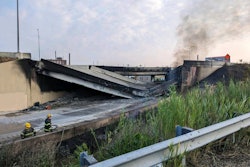
Whenever you make predictions about the future, even with rich data sources and research, those predictions live in the realm of speculation. That reality came into sharp focus recently as 2022 driving habits and statistics were analyzed compared to the projections made in the decades prior. The American Association of State Highway and Transportation Officials (AASHTO) predicted that drivers would travel 4.2 trillion miles in 2022, which turned out to be an over-projection by 1 trillion miles, fueled largely by younger generations. Why does that matter?
For starters, these projections are what act as the primary justifications for how current and future monies will be allocated. What types of transportation projects will get the lion's share of funding? What kinds of infrastructure initiatives will receive attention and validation, and which ones will not. In short, it is the guide post for officials when making difficult and important calls about our tax dollars. From FHWA 2013 Conditions and Performance analysis
From FHWA 2013 Conditions and Performance analysis
As little as a decade ago, in 2013, the U.S. Department of Transportation (USDOT) predicted that vehicle miles travelled (VMT) would continue to grow steadily at a rate of 1.85% to 3.65 trillion miles in 2020 and 4.31 trillion miles by 2028. It is obvious to us now that 2020 would be anomalous due to the COVID-19 pandemic and nationwide lockdowns, which drastically effected driving. But that isn't the full story.
Those Damn Millennials Again
According to A new study published in the peer-reviewed journal Transportation Research Part A: Policy and Practice there is an increasingly large divide between U.S. generational groups and their VMT. Millennials (those born between 1981 and 1996) are driving 8% less than Gen X (1965 to 1980), and 9% less than younger baby boomers (1956 and 1964).
The largest population contributor to the VMT shortfall likely rests here with the lifestyle and cultural shifts made by this generation now coming into their own within the broader workforce. However, they're doing so in substantially different ways than their predecessors. Without being too reactionary, it is likely that this trend will continue further in this direction, rather than turn around.
In an article by Quartz, Camille Squires reported that, "Existing research suggest[s] that younger Americans are choosing to drive less to meet work and life obligations. Teens and young adults are waiting later to get their driver’s licenses (pdf) and some are or skipping it entirely." And the changes in work-related demands have only accelerated this trend. Squires continued, "The rise of remote work has shortened, if not eliminated, commuting for 36 million Americans who work from home, up from 8 million before the pandemic."
But these trends were already making gains before COVID struck. A total of 3.65 trillion VMT was projected by USDOT for 2020, but Americans only drove 3.26 trillion miles in the pre-pandemic year of 2019 – nearly 400 billion fewer miles than anticipated.
Tony Dutzik, the Assoc. Director and Sr. Policy Analyst, Frontier Group, recently posted this graph to his public Twitter account (@FrontierTony) and said in a series of tweets, "Americans drove 4.3% fewer miles on average in 2022 than they did in 2019 and 6% fewer miles than in the all-time peak per-capita driving year of 2004. Up 0.9% from 2021 [which was itself] down 2.9% from pre-pandemic year of 2019, per FHWA."
 Taken from Tony Dutzik's Twitter account.
Taken from Tony Dutzik's Twitter account.
A potential implication from this data, sourced from the FHWA, is that societal shifts brought on and/or exacerbated by the pandemic have brought upon a lasting series of changes with no clear end in sight.
What Could This Mean Going Forward?
How you feel about this will greatly depend on your perspectives on topics like walkable cities, multi-modal transit development, and public transportation. However, if the future is to be prioritized based on the new reality data is presenting, then it might mean larger sums of funding going to those types of projects (including a greater focus on road repair and maintenance), rather than to highway expansions and new road construction.
The current administration already sent clear messages that this is the pathway forwarded intended for the Infrastructure Investment and Jobs Act (IIJA) funding when it issued a highly controversial and debated memo providing guidance to States, "to encourage and prioritize the repair, rehabilitation, reconstruction, replacement, and maintenance of existing transportation infrastructure."
However, after nearly two months of political maneuvering, a new guidance was issued on Feb. 24 that superseded the original memo with language that makes it clear that each state has the principal role in deciding how to spend the billions of federal road and bridge dollars from the IIJA. What this means is that States now have a choice to make, and the results of that choice will have incredible effects on the future of their populations.
Though some of these assertions might, at first, be taken as dubious for our industry, the reality is that many experts know things haven already changed. At the NAPA 2023 Annual conference, one production manager said, prior to the morning's session, "Asphalt is the most recycled product in use today. The name of the game is maintenance, now."
Perhaps, more than ever before in our nation's history, the conditions are right for a major reprioritization. Ultimately, the decision is up to the States what they will do, but people across all generations seem ready for more options, more freedom, and more mobility wherever they live. "Predictions [are] hard, especially about the future. And they're getting harder all the time," Dutzik concluded. "Maybe building our transportation decisions around the future we want, as opposed to the future we think might happen, seems like the better way to go."




















